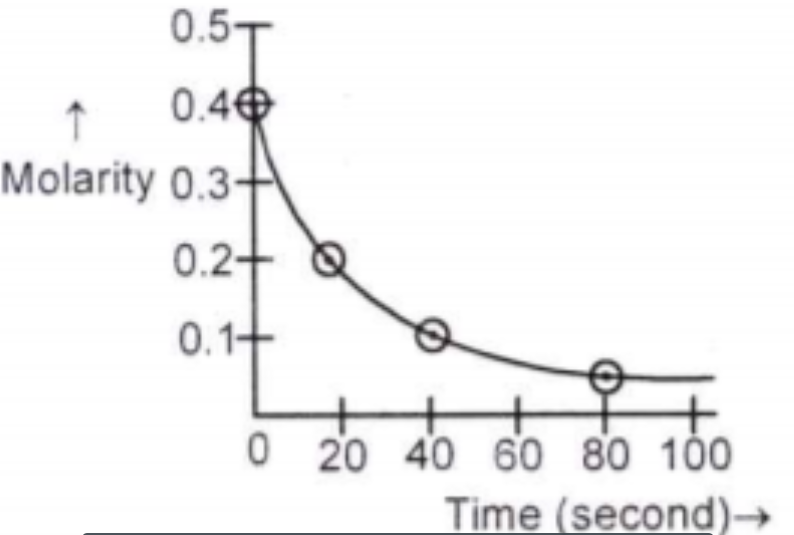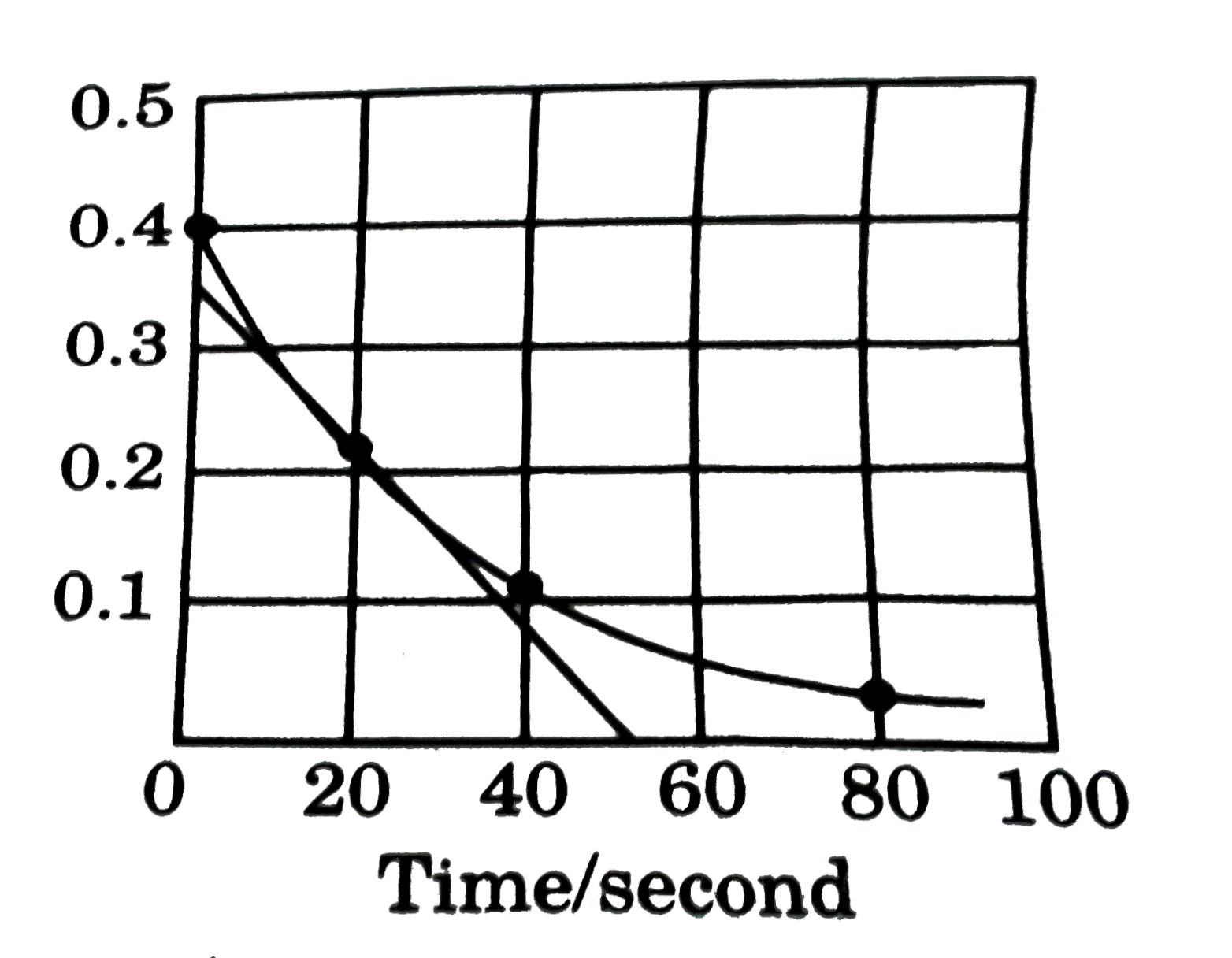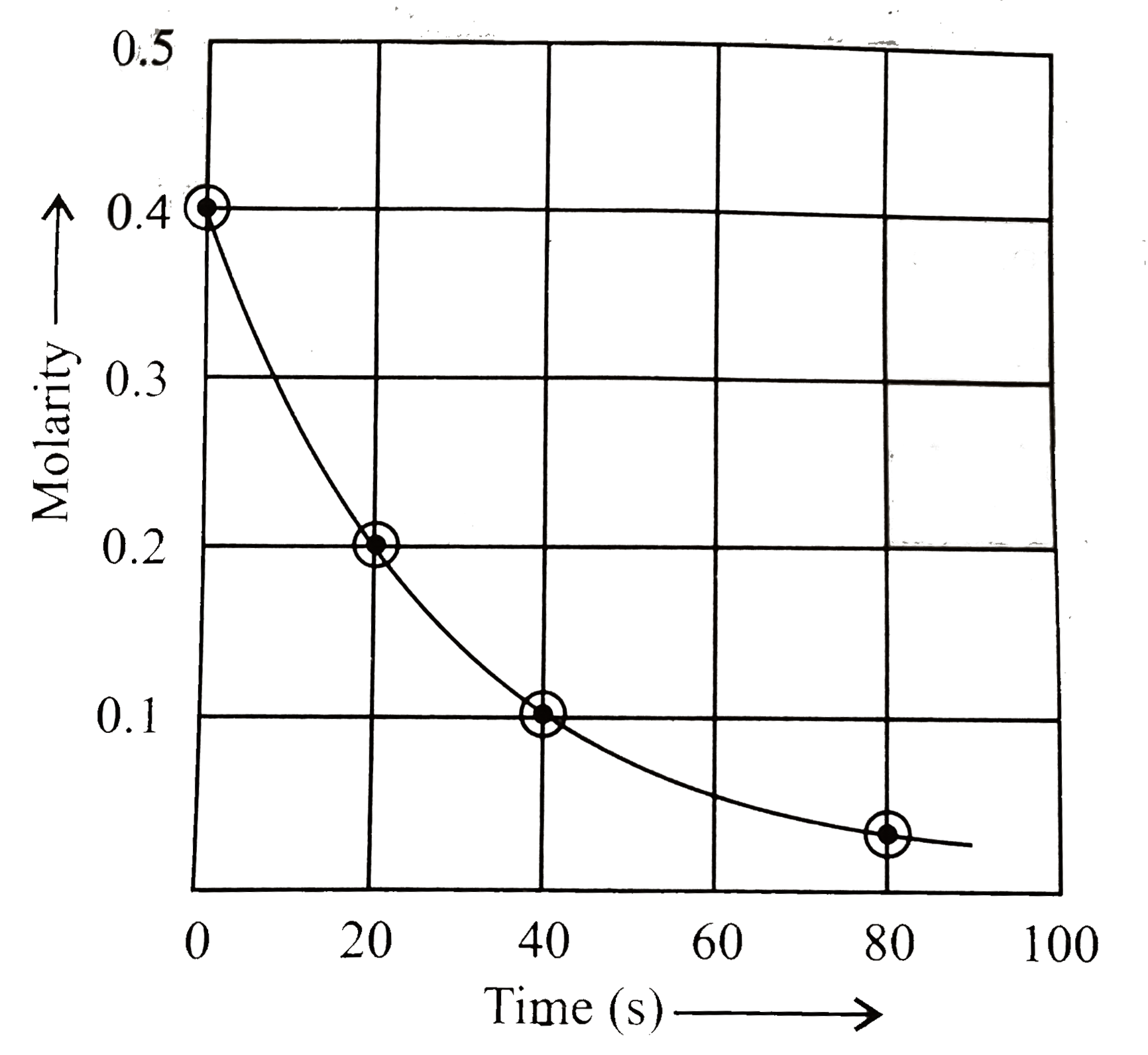A reaction follows the given concentration-time graph The rate for this reaction at 20 s will be
 Solution in Bengali
Solution in Bengali
4×10−3Ms−1
8×10−3Ms−1
2×10−2Ms−1
1×10−2Ms−1
The correct Answer is:D
Step by step video & image solution for A reaction follows the given concentration-time graph The rate for this reaction at 20 s will be by Chemistry experts to help you in doubts & scoring excellent marks in Class 12 exams.
Updated on:21/07/2023Topper's Solved these Questions
Similar Questions
Which has higher conductance and why? Silver wire at 30∘C or silver wire at 50∘C?
View SolutionFor the reaction: aA + bB rarr cC+dD Rate = (dx)/(dt) = (-1)/(a)(d[A])/(dt) = (-1)/(b)(d[B])/(dt) = (1)/( c)(d[C])/(dt) = (1)/(d)(d[D])/(dt) A reaction follows the given concentration-time graph. The rate for this reaction at 20 s will be
View SolutionIf doubling the concentration of a reactant X in a reaction X+Y rarr Products, increases the rate times and tripling its concentration increases the rate nine times, this indicates that the rate of reaction is proportional to the ………….of the concentration of.............and thus rate is given by........... .
View SolutionThe given graph shows the effect of substrate concentration on the rate of reaction of the enzyme green gram-phosphatase

What dose the graph indicate
View SolutionA reaction follows the given concentration (M) vs time graph. The rate for this reaction at 20 seconds will be :

View Solutionअभिक्रिया A+B→ उत्पाद के लिए यह प्रेक्षित किया गया
(i) कि केवल A की प्रारंभिक सान्द्रतादोगुना करने पर अभिक्रिया दर भी दोगुनी हो जाती है
(ii) A तथा B दोनों की ही प्रारंभिक सान्द्रतादोगुना कर देने पर, अभिक्रिया की दर 8 गुना हो जाती है
इस अभिक्रिया की दर निम्न द्वारा दी जाएगी
View SolutionThe concentrations of the reactant A in the reaction A to B at different times are given below: The rate constant of the reaction according to the correct order of reaction is :
View SolutionFor the reaction A+2B→C , the reaction -rate is doubled if the concentration of A is doubled. The rate is increased by four times when concentrations of both A and B are increased by four times . The order of the reaction is -
View Solutionplot a graph of reaction -rate vs concentration of the reactant for a fist order reaction.
View Solutionअभिक्रिया A+B→ उत्पाद, के लिए यह प्रेक्षित किया गया कि
(i) मात्र A की प्रांरभिक सान्द्रता दुगुना करने पर, अभिक्रिया दर भी दुगुनी हो जाती है,
(ii) A तथा B दोनों की ही प्रांरभिक सान्द्रता दुगुना कर देने पर,अभिक्रिया की दर में 8 गुना परिवर्तन हो जाता है
इस अभिक्रिया की दर निम्न द्वारा दी जायेगी
View Solutionअभिक्रियाA+2B→C के लिये यदि A के सांद्रण को दुगुना करते है तो अभिक्रिया की दर दुगुनी हो जाती है। जब A तथा B दोनों के सांद्रण में चार गुना वृद्धि होती है तब दर चार गुना बढ़ जाती है तो अभिक्रिया की कोटि है
View SolutionRate constant for a first-class reaction 4 xx 10^(-3) s^(-1) is. The reaction rate at 0.02 M concentration will be -
View SolutionThe following graph shows the relationship between subtrate concentration and rate of enzymatic reaction. What is the effect of subtrate concentration on rate of reaction ? And identify A.
View SolutionFor the reaction: aA+bB→cC+dD
Rate =dxdt=−1ad[A]dt=−1bd[B]dt=1cd[C]dt=1dd[D]dt
A reaction follows the given concentration-time graph. The rate for this reaction at 20s will be

View SolutionIf doubling the concentration of a reactant X in a reaction X+Y→ Products, increases the rate four times and tripling its concentration increases the rate nine times, this indicates that the rate of reaction is proportional to the ………….of the concentration of.............and thus rate is given by........... .
View Solution
